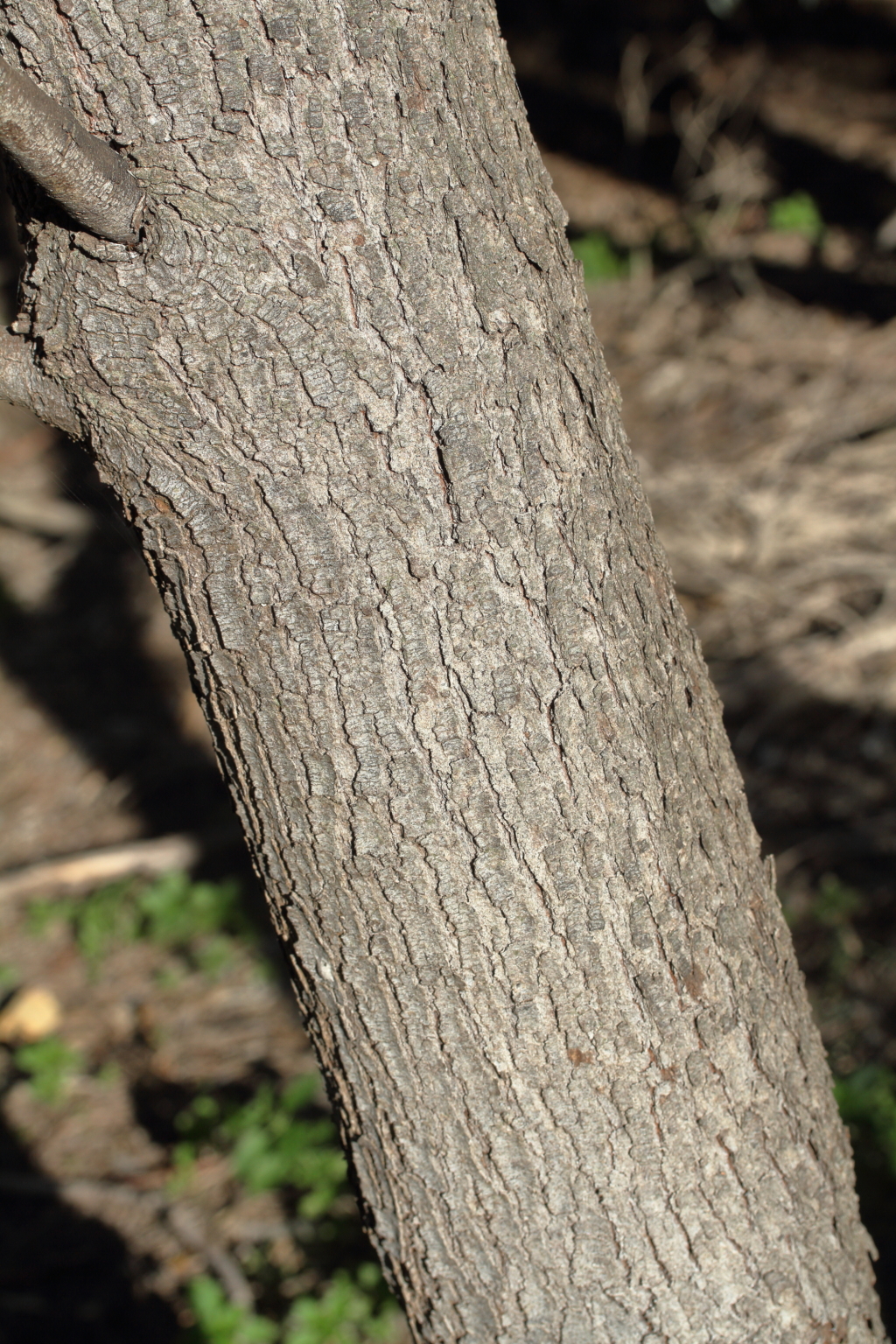Acacia salicina
Lindl. Willow WattleShrub or tree 3–13 m high, often clonal; branchlets pendulous, often zigzag between nodes, dark grey-brown, glabrous. Phyllodes pendulous, linear to narrowly oblanceolate or narrowly elliptic, 4–20 cm long, 4–30 mm wide, 4–40 times as long as wide, more or less flaccid, green to grey-green, sometimes glaucous, glabrous, apex acute to obtuse with small often oblique, mucro; pinnately veined, midrib prominent; glands 2–5, lowermost 0–5 mm above pulvinus, distal glands often prominent with one at base of mucro. Raceme with rachis usually 1–5 cm long, glabrous, 2–8-headed; peduncles 5–15 mm long, glabrous; heads globular, moderately dense, 15–25-flowered, cream to pale yellow. Flowers 5-merous; sepals united, more or less truncate. Pods narrowly oblong, to 12 cm long, 7–13 mm wide, woody, thick, longitudinally striate when dry, grey-green, glabrous; seeds longitudinal, elliptic to oblong-elliptic, 4.5–6 mm long, shiny, dark brown to black, aril scarlet. Flowers usually Mar.–Jun.
LoM, MuM, Wim, VVP, VRiv, MSB, RobP, MuF, Gold, NIS, VAlp. Also NT, SA, Qld, NSW. Mainly occurring on the Murray River floodplain from Echuca to the South Australian border, but also in the Dimboola region. Grows on soils ranging from sand to clay.
Similar to A. ligulata but distinguished most readily from that species by its pendulous, thicker (coarsely wrinkled when dry) phyllodes with a non-hardened mucro, and its cream to pale yellow heads. In addition, the phyllodes of A. salicina are often broader (4–30 mm cf. 4–14 mm wide).
Entwisle, T.J.; Maslin, B.R.; Cowan, R.S.; Court, A.B. (1996). Mimosaceae. In: Walsh, N.G.; Entwisle, T.J., Flora of Victoria Vol. 3, Dicotyledons Winteraceae to Myrtaceae, pp. 585–658. Inkata Press, Melbourne.
 Spinning
Spinning



